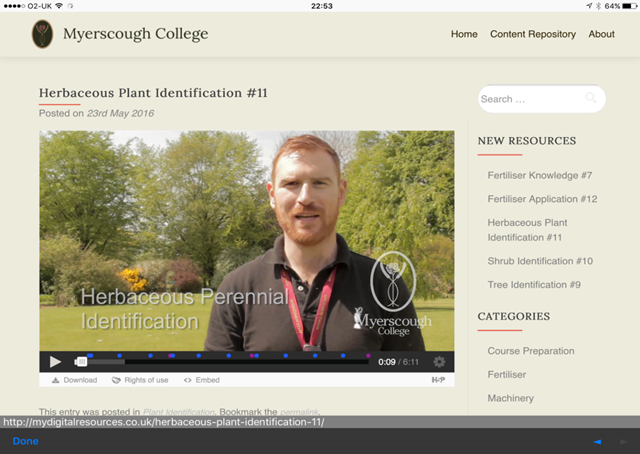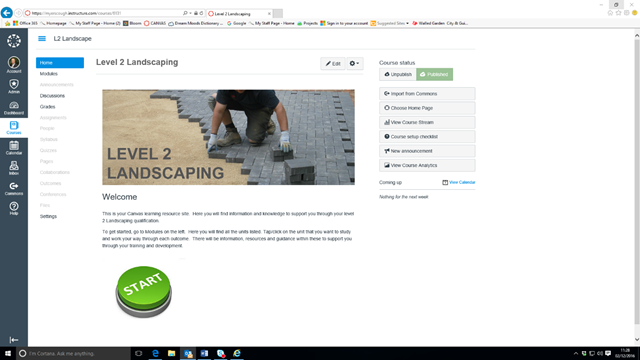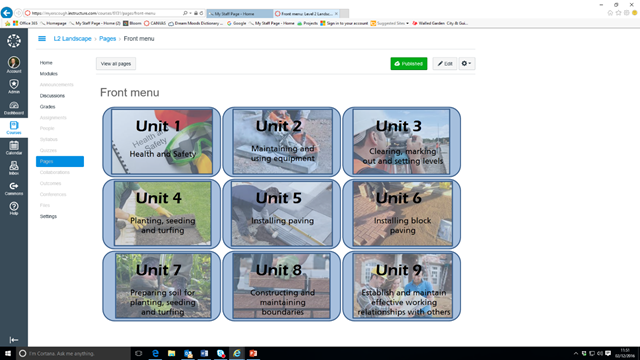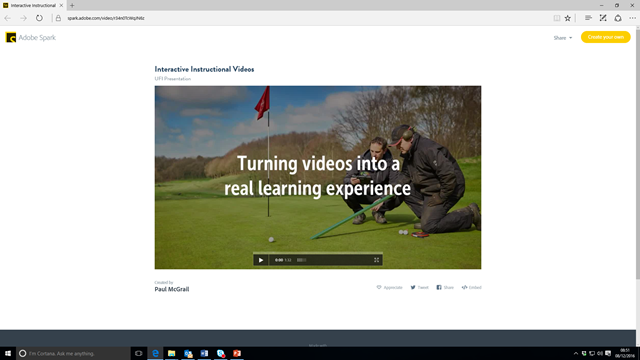Digital learning ‘BLEND’ project makes great strides
- Published
- Wednesday 14 Dec 2016
A project aimed at revolutionising digital learning at Myerscough College is making great strides. Over the last twelve months, Myerscough has been leading a European funded project to develop and test innovative blended work-based learning. The BLEND project aims to develop, share and test high quality blended work based delivery models over a three-year period, with other project partners in Holland, Finland and Spain. The project will end in 2018.

The aim of the project is to embed and mainstream the innovation and adaptation of work based learning, whilst continuing to advance and understand more about pedagogical approaches in the workplace, advances in the application of new learning technologies and opportunities for collaborative learning.
More specifically, Myerscough College is developing a blended learning programme for Level 2 Landscape students. It includes interactive learning packages to deliver some of the underpinning knowledge. The blended learning programme and e-learning resources are currently being piloted with a group of Level 2 learners that are on an apprenticeship program in partnership with the Association of Professional Landscapers. The program is designed to offer companies that are members of the APL, the opportunity for their apprentices to gain vital skills in which they can use in their job role.
The BLEND project consortium is co-ordinated by Myerscough College, with input from partners including a private training provider in Holland, IPC Groeme Ruimte; a land based vocational college in Finland, KPEDU; and experts in e learning technology, The Galician Supercomputing Centre.
In terms of where the project currently is up to, work is continuing to enhance the Landscape level 2 VLE (Virtual Learning Environment), using an online system called Canvas. A significant amount of time has been spent planning the structure of the site to ensure a true blended approach with a variety of learning activities is achieved. Careful attention has also been paid to ensuring any tasks uploaded for the learners are meaningful and have a purpose, as well as providing a clear outcome and being enjoyable and intuitive.
Another area being worked on extensively is the development of a variety of interactive packages using H5P technology. Central to these developments is the use of instructional interactive videos. These videos will be a pivotal resource to support the future design of apprenticeship qualifications and a clear move to end-point assessment. The Blend project aims to build on expertise Myerscough gained during the recent Ufi Interactive Videos project.
For an example of the kind of interactive content being produced, go to the following links:
Use of Adobe Spark to create engaging presentations and short informative videos: https://spark.adobe.com/video/r34n0TcWqJN6z
Use of 3600 video capture – This is new technology being piloted, that can be turned into effective learning resources: https://www.youtube.com/watch?v=GQKNRYtImqs&feature=youtu.be

by Dave Salmon
DSalmon@myerscough.ac.uk
